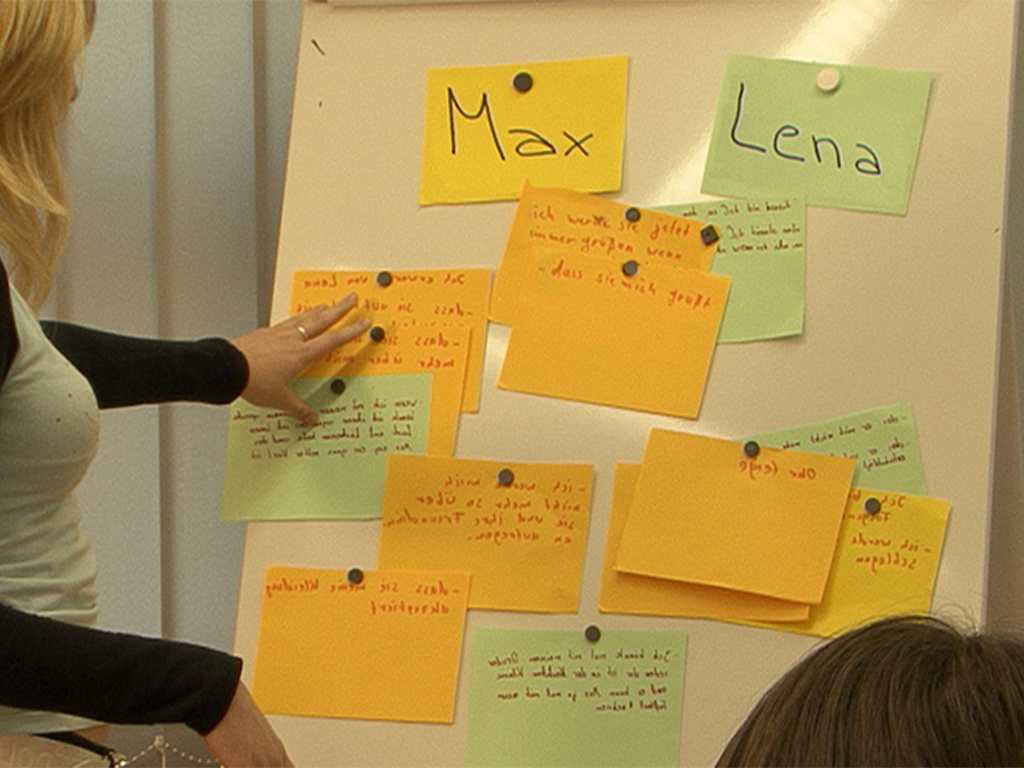 Society
Society


4671719 / 5561518
Prügelopfer
Gezeichnet fürs Leben
Der Film zeigt die potenziell verheerenden Folgen von Jugendgewalt am Beispiel des 25-jährigen Christoph, der 2007 das Opfer einer brutalen Attacke aus Eifersucht geworden ist. Die Schüler bekommen ein anschauliches Bild von der Krankengeschichte Christophs, seinen schweren körperlichen Einschränkungen, aber auch von seinem harten Kampf zurück in ein halbwegs selbstbestimmtes Leben. Die Schüler erfahren aus Christophs Interview hautnah, welch dramatischen Einschnitt ein derart tragischer Vorfall auch im Hinblick auf die eigene gesellschaftliche Anbindung (Aktivitäten, Freundeskreis, etc.) haben kann. Außerdem beleuchtet der Film die rechtliche Seite des Übergriffes und befasst sich mit der Situation des Täters, heute und während Christophs Koma. Das umfassende Begleitmaterial (klassische und interaktive Arbeitsblätter, Testaufgaben, Lehrtexte – allesamt auf der DVD) befasst sich unter anderem mit den Ursachen der Gewalt unter Jugendlichen und liefert eine Vielfalt an Aufgaben, welche die Schüler zum Nachdenken und zur Diskussion anregen. Damit ist die DVD ideal für den Einsatz im Unterricht.
Play trailer

Curriculum-centred and oriented towards educational standards
Matching
Peer Mediation
Lena and Max attend the 7th form. Max is new in class. During a break, Max notices that Lena and her friend are laughing at him again. Max loses his temper! He slaps Lena in the face. That hurts and Lena runs back into the classroom with a red cheek. The growing conflict between the two has escalated. Just like Lena and Max, every day pupils all over Germany have rows with each other. At the Heinrich Hertz Gymnasium in Thuringia, pupils have been trained as mediators for years. At set hours, they are in a room made available by the school specifically for mediation purposes. The film describes the growing conflict between Max and Lena and shows a mediation using their example. In doing so, the terms “conflict” and “peer mediation” are explained in a non-technical way. The aims of peer mediation and its progress in five steps as well as the mediators’ tasks are illustrated. The art of asking questions and “mirroring”, which the mediators must know, is described and explained. Together with the comprehensive accompanying material, the DVD is a suitable medium to introduce peer mediation at your school, too.
Copyright
Copyright is subject to constant change to keep up with technological advances. This film enables the viewer to grasp the basic principles of this extremely intricate matter. By way of introduction, the film defines what an author is, what kinds of works there are and how long a work is protected on principle. Then the fundamental rights of an author are cited and it is shown how these are exploited in our times. In the third chapter, the respective rights are illustrated by way of practice-oriented examples of books, photos, music and films. Here, of course, an emphasis is laid on the field of education, taking into account the latest case law within the EU and Austria in particular. A further chapter highlights the problems arising with the Internet and goes into the citation law and pirate copies. All in all, in this way the viewer is made familiar with the most important basic terms and their meanings. Comprehensive worksheets and additional accompanying material invite us to deepen our knowledge of the subject.
Youth Movement
Dancing until your feet hurt: Here, at the meeting on the Hoher Meissner near Kassel, 3,500 participants from Boy Scout associations, youth and Wandervogel groups from all over the German-speaking region have gathered. They want to celebrate, simply get to know each other and commemorate a historic anniversary.









